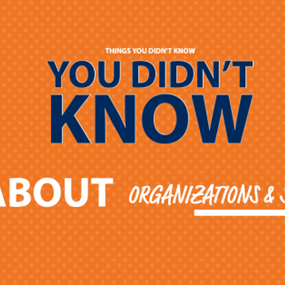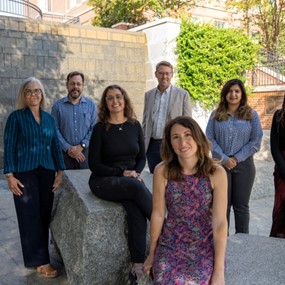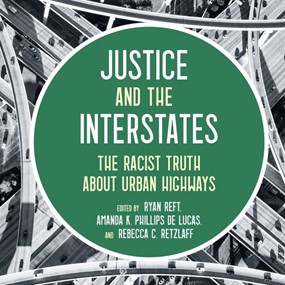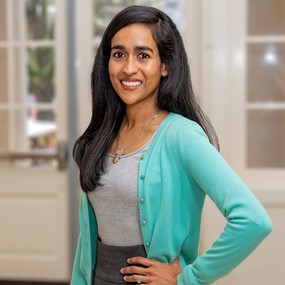The hands of time: Auburn historians, engineers solve 500-year-old mechanical limb mystery
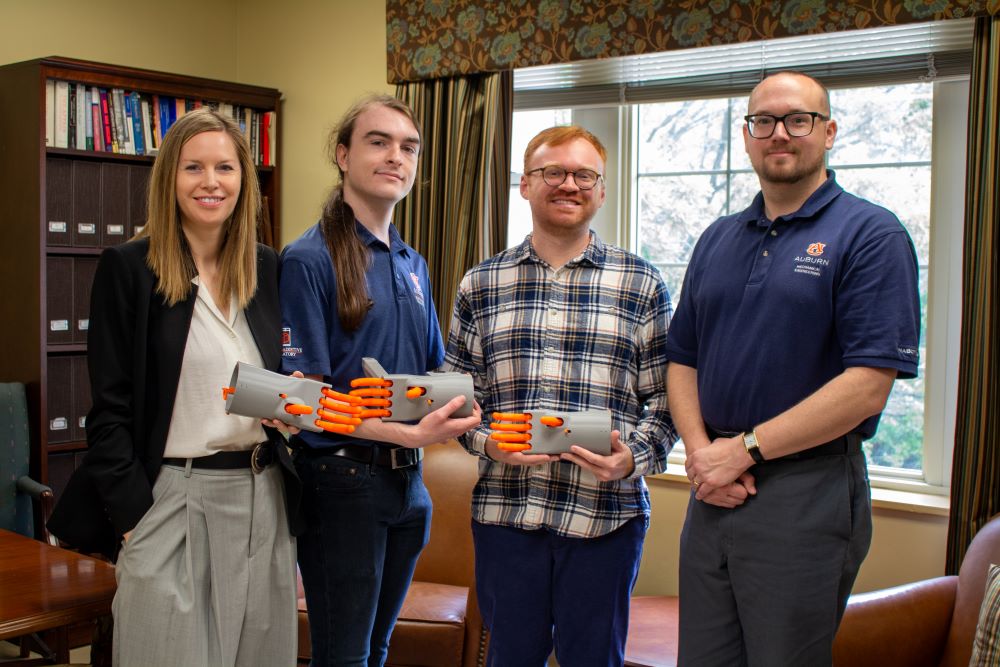
The Kassel Hand, one of the only surviving mechanical limbs of its kind from the 1500s, has been a mystery for some time. Because of its age, condition and the environment it must be kept in, no one knew exactly how it worked. Until now.
A team of historians and engineers at Auburn University have successfully recreated the 500-year-old prosthetic limb by combining their interdisciplinary skills. The original artifact is on display in Germany, under lock and key in a climate-controlled exhibit, so Associate Professor of History Heidi Hausse formed a team at Auburn to investigate how it worked.
Hausse said artifacts like this provide a window into the past that can tell us more about the people who once wore them.
“That open question, having artifacts as one of the few direct sources we have to learn about people who experienced limb loss or limb difference in the 16th century, has been a driving passion of mine,” Hausse said. “Finding someone who got excited about the idea of trying to recreate the object in a way that could be tested has just been a dream that I didn’t imagine would actually happen.”
Hausse, Assistant Professor of Mechanical Engineering Chad Rose and several graduate students have worked for years to reverse-engineer what they found in photographs, measurements and direct observation of the original artifact.
Those photographs, Rose’s experience in human-robot interaction and Hausse’s study of the artifact, helped them slowly piece together how the hand’s parts moved.
“We’re taking inspiration from investigative engineering projects. It’s a mystery that we’re following through the design footsteps of some other designer from history,” Rose said. “At its core, it’s about understanding how someone interacts with and uses an assistive device. It’s a collaborative research project and a conversation.”
The team created three models of the Kassel Hand in the Mechanical Engineering Department’s ME3D Lab.
The “facsimile” model, dubbed “Lookalike,” looks and moves like the original artifact. It is entirely printed in plastic, making it inexpensive to reproduce but weaker than the reinforced models.
The “functional” model, called “Work-Alike,” is modified so the 3D-printed plastic can hold weight and force similar to the artifact’s original metal material. Finally, the “prosthosis” model is a functional version with a handle attached so that a person without limb loss can operate the model.
Mechanical engineering graduate student Peden Jones served as lead engineer for the later models’ reliability and mechanics. He applied his research focus, internal forces and designs of a part, to recreate a working model.
“There are times where you notice something that the original maker did and it’s something completely different from what we would’ve done today. Neither option is right or wrong, but it’s just an alternate way of doing it,” Jones said. “There are times where they do align and it’s two people, 500 years apart, coming to the same solution. There’s sort of a neat feeling of rediscovery in the air whenever that happens.”
Others have recreated ancient prosthetics around the globe, but none have explored its historic function quite like the Auburn team.
The world’s earliest discovered prosthetics, a set of two artificial toes from ancient Egypt, were recreated using original materials of wood and leather. In Germany, a team has recreated mechanical, early modern limbs and used them for modern experiments, including seeing if it could hold a mobile phone.
Auburn’s history and engineering team approached the Kassel Hand by trying to paint a full picture of how the artifact was used – everything from how it looked to its daily use by someone with limb loss or difference.
“We developed historically-grounded experiments to help us learn more about how these artifacts could have been used, because the question of functionality is so open,” Hausse said. “We merged together ideas that Chad was familiar with from modern limb functionality assessments with what I know about the early modern period and what kind of daily activities people would do in different social classes.”
This spring, the team launched an educational website where people can learn about and print the Kassel Hand models, sharing their findings and its significance with anyone who is interested in joining the conversation opened at Auburn.
The website explains the historical background of the Kassel Hand and how the team modeled it based on their understanding of mechanical limbs from the 16th century.
A page of modern takes shares perspectives from local prosthesis users involved in the project – one of whom pointed out that there are modern prosthetics on the market today that work incredibly similar to the Kassel Hand.
The different sections of the website outline how to assemble and use the model if you are interested in creating one, including how to modify the functional model to fit a residual limb for comfort and safety if you have limb loss or difference.
Stuart Simms, doctoral candidate in the Department of History, developed the website to communicate the experiment’s complex historical and engineering concepts to a broad audience. He hopes its use in classrooms, medical demonstrations or museums will help bring the artifact’s importance to life.
“A lot of people kind of have this contemporary idea of prostheses and prosthesis use,” Simms said. “This project has been really illuminating in terms of the ways that the team has started to think about prosthesis use in a much more elongated historical context.”
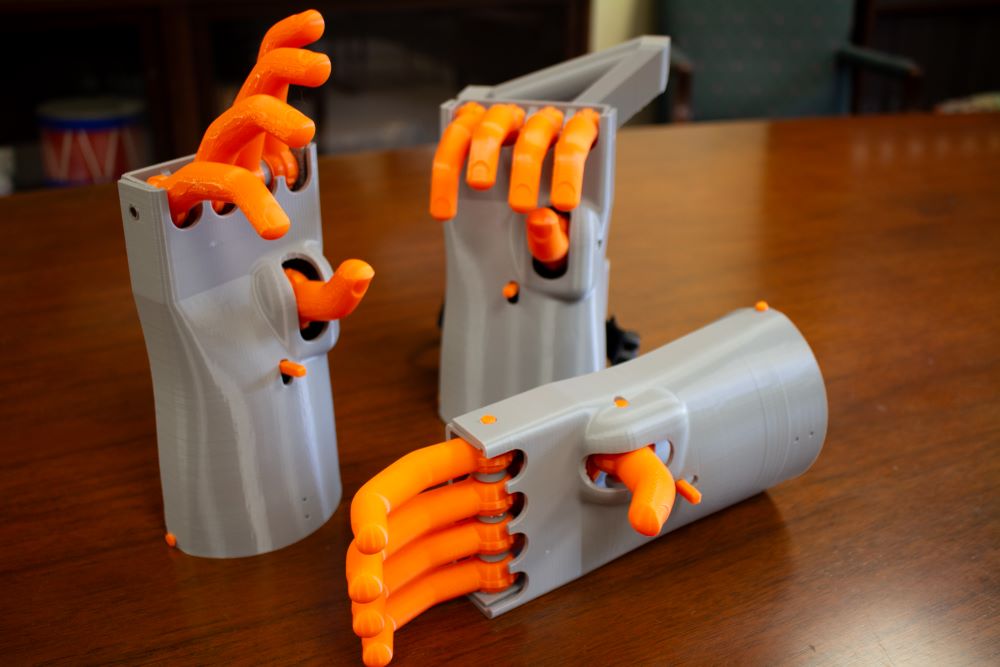
The website also includes 3D printable files, assembly videos and tips and tricks for individuals or institutions 3D-printing their own model. The engineering team contributes pages explaining how the artifact functions, what’s going on inside of the artifact and how they approached 3D modeling a 16th-century iron hand recreation.
Anakin Natter, a rising senior in computer science, led the development of the first working model. After designing a more organic, forged look to match the original, his role transitioned to the computer science side of the project. He said applying the skills he’s learned to a project that will help others learn by doing, and seeing how the model improves with more collaborators, made the hard work well worth it.
“It’s really fulfilling,” Natter said. “I started out mechanical engineering and then swapped to computer science and I’m still on the team and able to continue with this and it shows that it doesn’t really matter exactly what you’re pursuing, but it’s all about your skillset, how you apply it and your willingness to learn.”
Read more at the Kassel Hand Project website.


